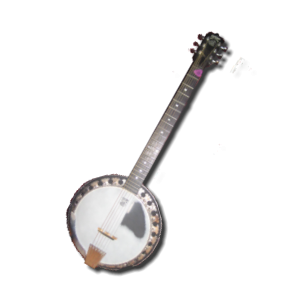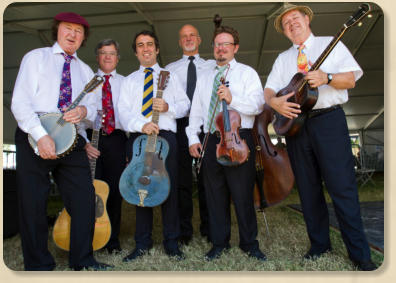
Seva Venet

“Traditional New Orleans Jazz”



During the last two decades of the 19th Century, string bands with skilled highly Creole musicians were in demand all around New
Orleans. They performed at various functions, including picnics, parlor room parties and balls. Between 1884 and 1917 there were
major changes in how the music was played, brought on by the changing demands of dancers and the changing attitudes in response
to the implementation of the Black Codes (U.S. laws limiting civil liberties of blacks) in the late 1800s.
There were three main types of ensemble performing around New Orleans from the 1880s to 1917: brass bands (for funerals), society
orchestras and string bands [which despite the name could include clarinet, cornet, trombone and even drums]. Being smaller and in
demand in more diverse settings, the string ensembles had more flexibility and were expected to entertain with up-to-date songs and
dancing music. In 1897, the Storyville District opened, and at Tom Anderson’s Annex on the corner of Basin Street and Canal a string
band played every night and, over the decades, featured musicians such as Wendell McNeil, Bill Johnson and, probably, Lorenzo Tio,
Jr. The location of this venue, at the border of the uptown and downtown areas, is highly symbolic, as pioneers of the new musical
concepts arose from the cultural interaction between uptown and downtown groups.
The string bands that performed at Anderson’s Annex potentially had some of the most important traits of the new music that would
come to be called jazz: a swinging rhythm built on the bass’ harmonic foundation; sophisticated soloists mixing virtuoso technical
ability; Eurocentric harmonies and forms (and probably a Latin lilt to boot), with syncopated rhythms (giving an element of surprise);
personal expression; and individual and collective improvisation, within the repetitive forms of up-to- date pop songs, including blues.
Whatever happened to the string bands in New Orleans? Somehow, around 1917, these popular ensembles fell between the cracks.
Yet the concept of a swinging band dominated by a rhythm section of strings was picked up in the 1920s by Belgian gypsy guitarist
Djanjo Reinhardt and his peers, and even by Hawaiian bands (most famously Sol Hoopii.) In the 1930s and ‘40s, Western Swing
bands, and Bill Monroe’s bluegrass groups followed suit in string bands tinged with New Orleans jazz. It isn’t until the late 1940s that
we have recordings of a New Orleans string band. Edmond “Doc” Souchon’s 6 7/8 String Band (so called because of the short stature
of their 7th member) originally formed around 1910 and modeled themselves after bands the players heard playing in Anderson’s
Annex during the Storyville era. By the 1940’s they were reduced to a quartet, with rhythm guitar, mandolin, “Hawaiian” slide guitar and
bass. These 1949-1954 recordings of the 6 7/8 band may be the best surviving evidence of a string band performing in the style of
collective improvisation music from the turn of the century birthplace of jazz.
Read the entire Offbeat article here: http://www.offbeat.com/author/seva-venet/



The Storyville Stringband, led by guitarist Seva Venet, is a New
Orleans traditional jazz band that performs on strings rather than
drums and/or horns. They are loosely modeled after the 6 &7/8
string band of New Orleans. The music pulls from the same
repertoire, rhythms and spirit as the funky down home sound of a
traditional brass band.
Instrumentation (all acoustic) includes steel (slide) guitar, rhythm
guitar, mandolin, violin, tenor guitar, and upright bass (with an
occasional banjo.) Their song book contains selections recorded
by 6 &7/8 as well as other standard New Orleans rags, marches,
gospel, blues, latin tunes, and a some Hawaiian pieces. In
addition, Venet composes melodies with that old time New
Orleans jazz feel.
The Storyville Stringband has been performing since 2006. They
are keeping the sounds of traditional New Orleans string band
jazz alive in the 21st century.
Some notable concert performances:
The Storyville Stringband made their festival debut at the French Quarter Festival in New Orleans in April 2009 and in the fall of the
same year they played live on the local and world famous radio station WWOZ. Other noteworthy engagements include
performances at the premier New Orleans Jazz venue Snug Harbor Bistro, concerts at City Park's Pavilion of Two Sisters, Satchmo
Summer Fest in August 2011, The Ogden Museum of Southern Art, and performances at Preservation Hall and the Palm Court Jazz
Cafe. In May of 2012 they performed at the New Orleans Jazz and Heritage Festival.
All material ©copyright 2012-2019 by Seva Venet.
Unauthorized use prohibited. Use by permission from Seva Venet.


Hawaiian music was hugely popular throughout America in the years preceding the first jazz recordings, but one has to look close to
discover the role that Hawaiian instruments and songs played in the development of jazz. By looking at similar traditional cultural traits
as well as industrial bonds from pre-history to around the mid 20th century, we can determine some kind of kinship that points to
interdependent developments.
The influence of Hawaiian music on New Orleans jazz is not profound nor is it integral. Indeed, New Orleans jazz musicians had more
of an impact on Hawaiian music as it was experienced by the greater population of mainland Americans and absorbed by country and
western swing ensembles. Specifically, it was the rhythmic bass styles pioneered by New Orleans bassist Bill Johnson and his disciples
and the hot improvisation pioneered by such musicians as Johnny Dodds, Edward "Kid" Ory, Joseph "King" Oliver and Louis Armstrong
that influenced the development of the popular Hawaiian ensembles.
Both cultures were built on resilient and adaptive foundations that survived and and eventually flourished in the face of imperial
domination beginning in the 19th century. The first connection between the two regions was in New Orleans at the Cotton Centennial
Exposition in 1884 and in 1913 and 1918 (during the storyville era) a Hawaiian troupe led by "Toots" and July Paca performed
traditional Hawaiian music with ukuleles and slide guitars at the Orpheum Theater in New Orleans. It was around this time that Edmond
"Doc" Souchon formed the 6 7/8 String Band that featured ukulele and "Hawaiian" slide guitar. Also during these years a host New
Orleans string players began their musical pursuits on the ukulele an instrument made popular by Hawaiians. Some names that come
up in this roster include: Lemon Nash, Father Al Lewis, Creole George Guesnon and Danny Barker, who led a spasm band in
elementary school on a ukulele banjo.
The Hapa Haole song had Hawaiian and "white" or mainland themes and language and made Hawaiian music more adaptive and
accessible. It was through the Hapa Haole song that Hawaiian music and themes make their strongest presence in New Orleans jazz.
In December of 1929 King Oliver recorded the Jimmie Rodgers song "Everybody Does it in Hawaii" featuring Roy Smeck on slide
guitar. One month later, in January of 1930, Louis Armstrong with his famous orchestra recorded "Song of the Islands." "Song of the
Islands" would be Kid Shiek's concert closer at his frequent Preservation Hall appearances throughout the 1960's. In 1937 Armstrong
made four more records of Hapa Haole songs this time with the Hawaiian ensemble Andy Iona and his Islanders. By the 1940's
Hawaiian themed songs were being performed and recorded by Kid Ory, George Lewis and Bunk Johnson.
The crossover of the two genres is evident in the use of instrumentation and repertoire. It was a logical crossover for two genres
competing in the same national sphere with similar foundations based on the harmonies, melodies and forms from European Marches,
American Ragtime, Hymns, blues, and a welcoming of the new and novel. Also facilitating the crossover are the strong, adaptive, and
inclusive oral traditions at the foundation of each style. In the 21 century each style has easily endured the test of time and both regions
produce their share of virtuoso performers that touch people all over the world.
Read the full article in the Tulane Jazz Archivist here: Article
Photo: Zack Smith

Seva Venet conducts seminars and workshops on traditional New Orleans Jazz
including history, repertoire, banjo, and ensemble styles.
















